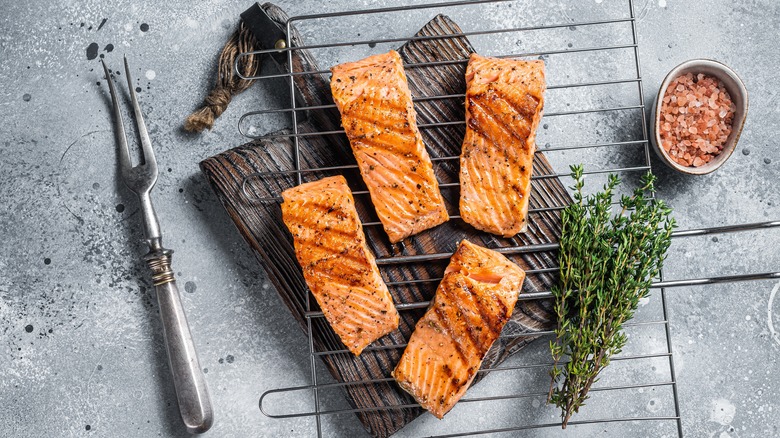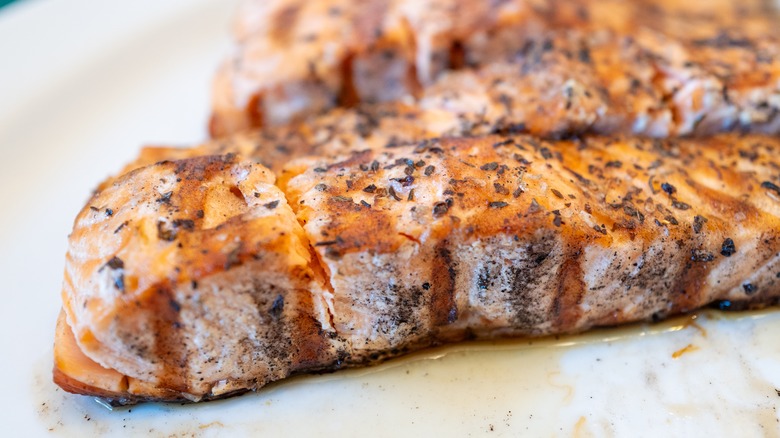Direct Vs Indirect Heat: Which Is Best For Grilling Salmon?
We may receive a commission on purchases made from links.
Grill salmon at home easily with one big tip that will ensure your filets are charred but succulent and never dry, with perfectly crisped skin. There are multiple factors at play here, but first things first: Where you cook your salmon matters most. Sheila Lucero is the Culinary Director at Big Red F Restaurant Group and the executive chef at Centro Mexican Kitchen and Jax Fish House & Oyster Bar, where pounds upon pounds of Norwegian salmon are grilled up for a tasty entree that's served with herb-roasted vegetables and dill crema.
"I prefer direct heat for timing and flavor," Lucero says. "When using direct heat, you do need to be aware of the potential for the flame to flare up, and that could hit the filet directly — causing carbon or unwanted char to develop on the filet." The salmon skin provides a barrier to direct heat, so keep it attached. It also provides fat, which will melt and moisturize the fish.
Just remember to scrape and spray — it's crucial to avoid charring the salmon too heavily. First, remove any crusty bits from those grill grates with an grill-cleaning brush, like this one from GrillArt, and then oil them right before adding your food. And while most chefs will encourage you to grill your salmon with the skin side down first, you may want to reconsider this decision; it all depends on how you want your salmon to look and taste.
For deeper grill marks, cook skin side up first
Grilling salmon is a quick task that takes less than fifteen minutes — but you'll want to heat your grill to a solid range of 450-500 degrees Fahrenheit. For more smoky flavor, charcoal or wood is the way to go. Cooking times will vary, and it depends on how thick your cut of salmon is. For every inch in thickness, grill the fish for six to eight minutes. If you're going for deep grill marks, start with the skin side up for a few minutes on the hottest part of the grill. The goal is to give it a good sear and flip it, with most of the cooking happening with the skin side down. Should you even eat the skin on salmon? Yes, you should: It is super healthy and delicious with a crunch like no other. Just be sure to season it. Oh, and remember to keep your fish dry but oiled when applying direct heat. No marinades here.
For a wetter application, either with a marinade or by applying sauce, consider using a different part of the grill. This bourbon-glazed salmon recipe is a perfect contender for indirect heat or for salmon cooked in foil or on a plank. That's because direct heat will cause the bourbon glaze to burn before the salmon finishes cooking. For the best of both worlds, sear the salmon deeply and quickly, basting with your sauce of choice for only the last minute of cooking. You can add more sauce while the fish rests before serving.

